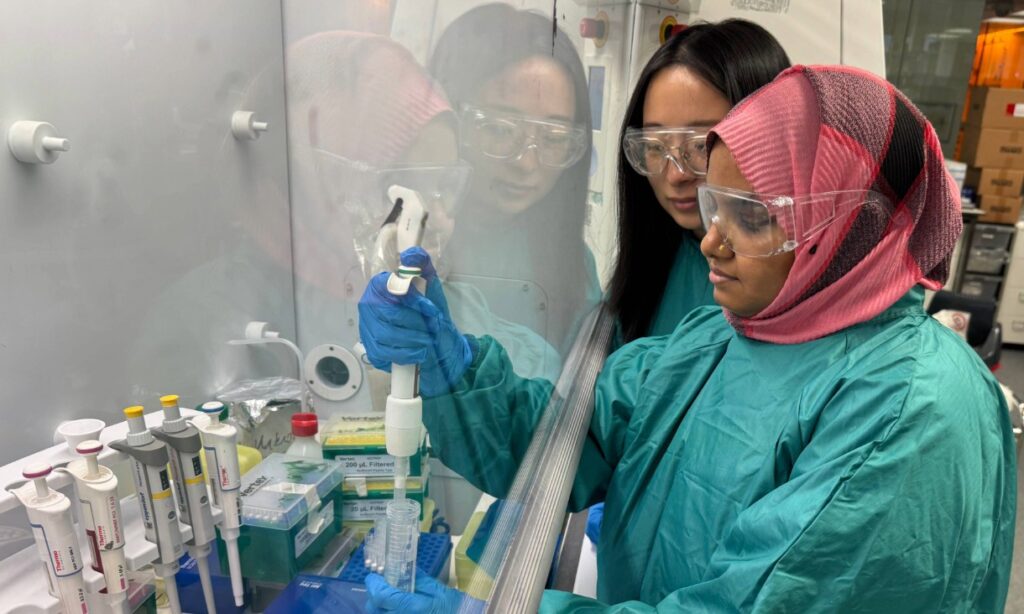
Recent research has unveiled the potential of tiny metal particles in the fight against cancer, marking a promising development in targeted treatment strategies. While still confined to cell-culture studies and not yet tested in live subjects, the findings suggest a novel approach to exploiting cancer’s inherent vulnerabilities.
The particles, composed of molybdenum oxide— a compound derived from the rare metal molybdenum— have shown remarkable effectiveness. According to the study’s lead researchers, Professor Jian Zhen Ou and Dr. Baoyue Zhang from the School of Engineering, modifications to the chemical structure of these particles led to the release of reactive oxygen molecules. These unstable forms of oxygen can damage cellular components and induce programmed cell death, known as apoptosis.
In laboratory tests, the metal particles demonstrated their ability to kill three times more cervical cancer cells than healthy cells within a 24-hour period. Notably, this reaction occurred without the need for light exposure, a significant departure from existing technologies that often rely on photodynamic mechanisms.
Dr. Zhang explained, “Cancer cells already live under higher stress than healthy ones. Our particles push that stress a little further—enough to trigger self-destruction in cancer cells, while healthy cells cope just fine.” This selective targeting of cancer cells suggests a potential for developing more refined and less damaging cancer therapies.
Collaborative Efforts and Innovations
The research involved a collaborative effort, including Dr. Shwathy Ramesan at the Florey Institute of Neuroscience and Mental Health in Melbourne and teams from institutions in China, such as Southeast University, Hong Kong Baptist University, and Xidian University. This partnership was supported by the ARC Centre of Excellence in Optical Microcombs (COMBS).
The team modified the molybdenum oxide by incorporating small amounts of hydrogen and ammonium, enhancing the particles’ electron handling capabilities. This fine-tuning resulted in an increased production of reactive oxygen molecules, further driving cancer cells towards apoptosis.
In an additional experiment, the particles were capable of breaking down a blue dye by 90 percent in just 20 minutes, demonstrating their potent chemical reactions even in the absence of light. This capability underscores the potential of these particles as a new class of biocatalysts in cancer treatment.
Future Directions in Cancer Treatment
Current cancer therapies often affect both malignant and healthy tissues, resulting in adverse side effects. The development of technologies that selectively induce stress in cancer cells could lead to gentler and more effective treatment options. The use of molybdenum oxide is particularly encouraging, as it is more cost-effective and safer compared to the noble metals typically used in therapeutic applications, such as gold and silver.
The COMBS team at RMIT University plans to continue this important work. Future steps will include exploring partnerships with organizations interested in advancing this research. Those interested in collaborating with RMIT’s researchers can reach out via email at [email protected].
The study titled “Ultrathin multi-doped molybdenum oxide nanodots as a tunable selective biocatalyst” was published in Advanced Science in March 2024 (DOI: 10.1002/advs.202500643). As research progresses, the promise of these metal particles may pave the way for breakthroughs in more targeted cancer therapies, significantly improving patient outcomes.






